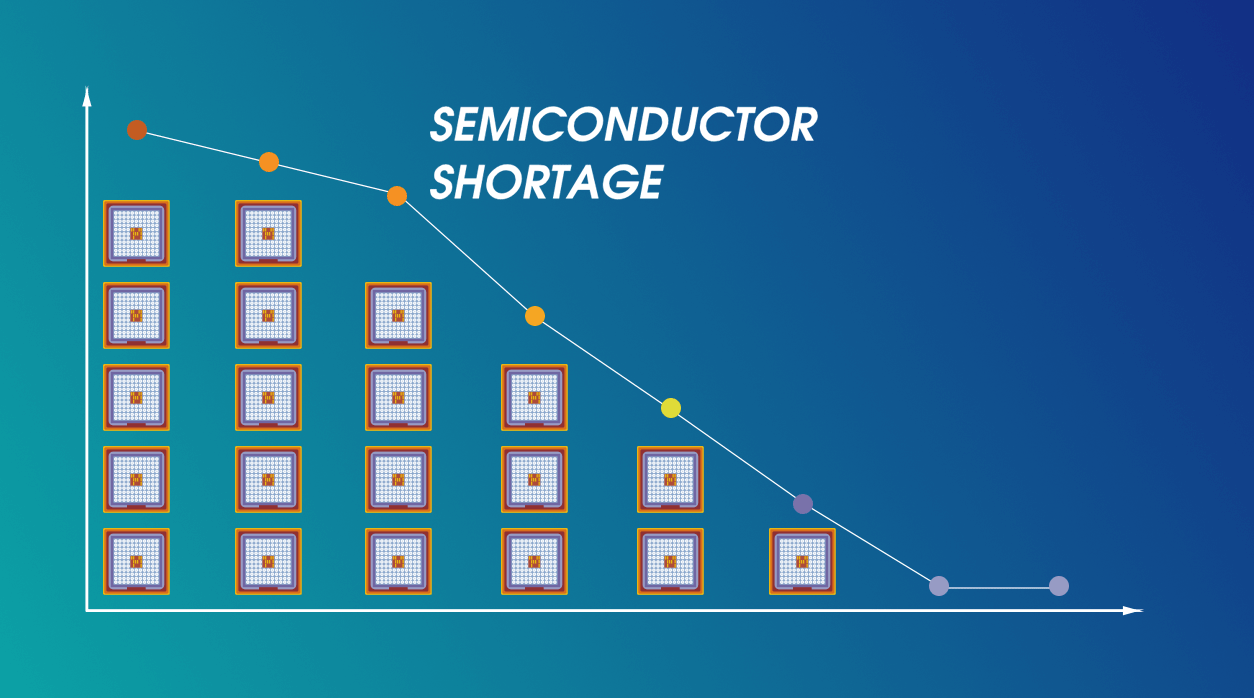
If your company makes products with electronics in them, you’ve probably run into major component availability problems in the past year. We’ve certainly been seeing this with our clients’ products! It can be a huge headache when a component in your BOM becomes scarce. You might have to scramble to find and test a pin-compatible substitute or, even worse, respin your board to use a different component.
Unfortunately, things may get worse before they get better; some analysts are predicting shortages lasting through 2018.
Manufacturing is difficult enough without having to deal with component shortages. So what’s the deal with this component crunch, and how can we protect our production schedules? Read on…

Why aren’t there enough chips to go around?
The demand for semiconductors is booming, thanks to a thriving technology sector (and the strong overall economy). Production capacity, however, hasn’t kept pace with the increased demand. Bringing additional capacity online takes time. Modern semiconductor fabs are incredibly complex and expensive things to build so there is a lag between the uptick in demand and increased fab capacity.
Also, according to some industry articles, the semiconductor industry is wary of increasing capacity too quickly and ending up with a supply glut should demand shrink. This scenario played out around the year 2000, resulting in a crash in component prices and knocking many companies out of business. Semiconductor companies are playing it safer this time around.
What can you do?
If you are a startup or smaller company, you’re at a distinct disadvantage when it comes to sourcing components. The “big guys” (large OEMs) have teams of procurement specialists that have better visibility and access to components. They will be working closely with the chip manufacturers and generally will get the best access to those components.
That being the case, in our experience, there are two main things you can do to maximize your chances of keeping your manufacturing on track.
- No Single-Source Components: The most important thing you can do is to avoid (or at least minimize) the use of single-source components in your design. This is a good practice for any new design, but especially critical these days.
- Work Closely With Your Contract Manufacturer: You’re probably relying on your CM to handle much of your procurement for you. Your CM should know your projected production volumes and be planning their component procurements months in advance. Also, let them know which components in your design are single-sourced so they can be especially proactive in procuring those parts! You may want to purchase and hold lots of extra inventory in those parts to protect yourself.
Want to learn more?
Allocation 2017: What’s Behind the Component Shortage
Nov. 16, 2017
“Component shortages are not just about increased demand. Any number of factors – production capacity, supply chain disruptions, obsolescence and technology migration – can contribute to product scarcity. For 2017 and 2018, supplier merger and acquisition (M&A) activity can be added to the causation list.”
Shortages Hit Packaging Biz
Dec. 11, 2017
“Supply imbalances reached a boiling point in the third and fourth quarters of this year {2017}, and it now appears that packaging customers may encounter select shortages well into 2018. There are several reasons for this. IC demand was greater than expected in 2017, so customers required more IC packaging capacity. But packaging houses are running at full capacity, unable to meet the demand for many but not all package types.”
